Your cart is currently empty!
5 Different Classes of Fire
It’s common knowledge that the use of an extinguisher in an emergency situation can prevent a major blaze. However, what many people don’t seem to know is that the wrong extinguisher can exacerbate an already dangerous situation. In a fire, it’s essential to identify which class of fire you’re dealing with in order to understand how best to fight it.
You never know when this information could prove vital, that’s why the team at Fire Safety Equipment has written this article explaining the five classes of fire.
Class A
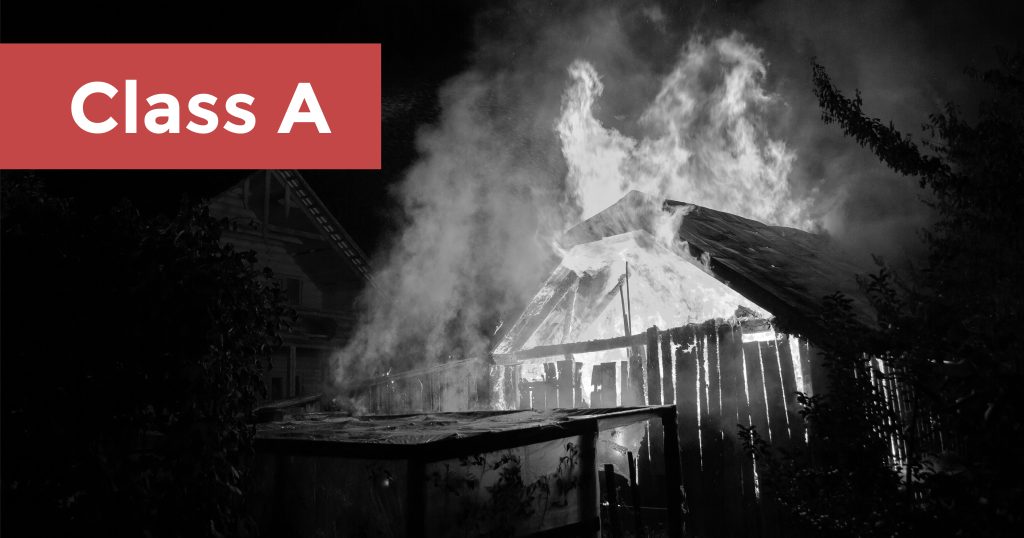
Class A fires are fuelled by everyday materials such as wood, paper and fabrics; they are the most common type of fire and can occur in any location where there is an accumulation of combustible materials. These are the only fires on which water-based extinguishers can be used. In fact, most types of fire extinguishers will be effective on Class A fires, apart from CO2 extinguishers.
Class B
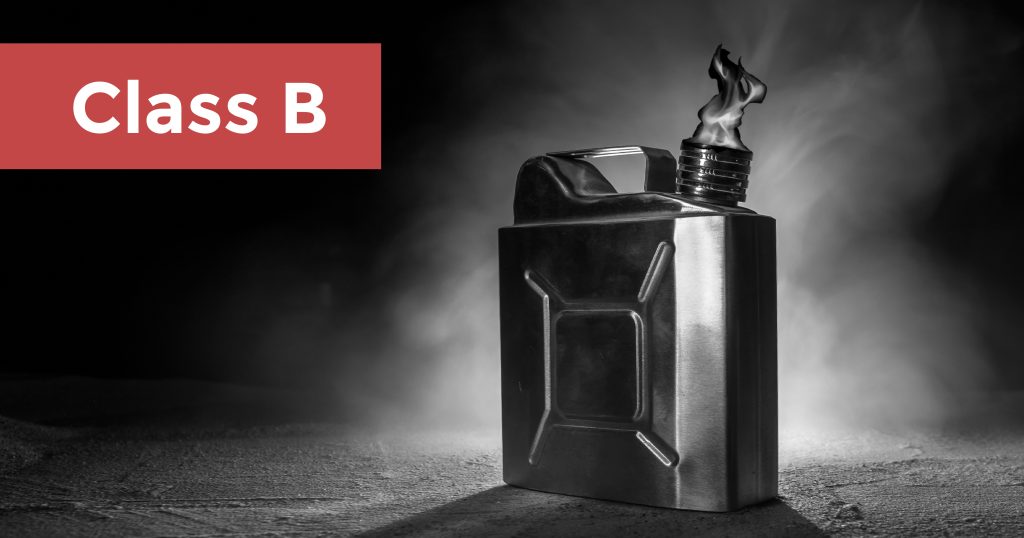
Flammable liquids (such as solvents, spirits and petrol) fuel Class B fires; as these liquids have such a low flash point, they will burn easily when a source of ignition is introduced. These types of fires are common in garages, labs and petrol forecourts, and high-risk locations must keep the correct fire extinguishers on site, along with precautionary signage. Class B fires are best put out with a foam extinguisher, however CO2 and dry powder extinguishers can also be used.
Class C
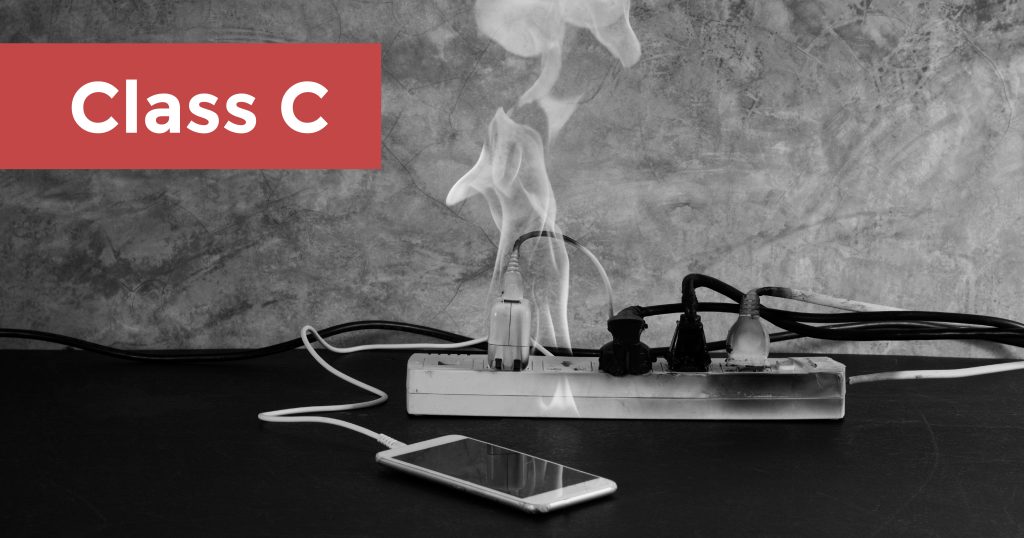
Class C fires involve flammable gases, such as propane, methane and butane. These fires are much more volatile with a higher risk of explosion; that’s why any vulnerable location should have secure and well-monitored storage methods. When tackling these fires, the source of the gas should be switched off immediately where possible and only dry powder extinguishers used.
Class D
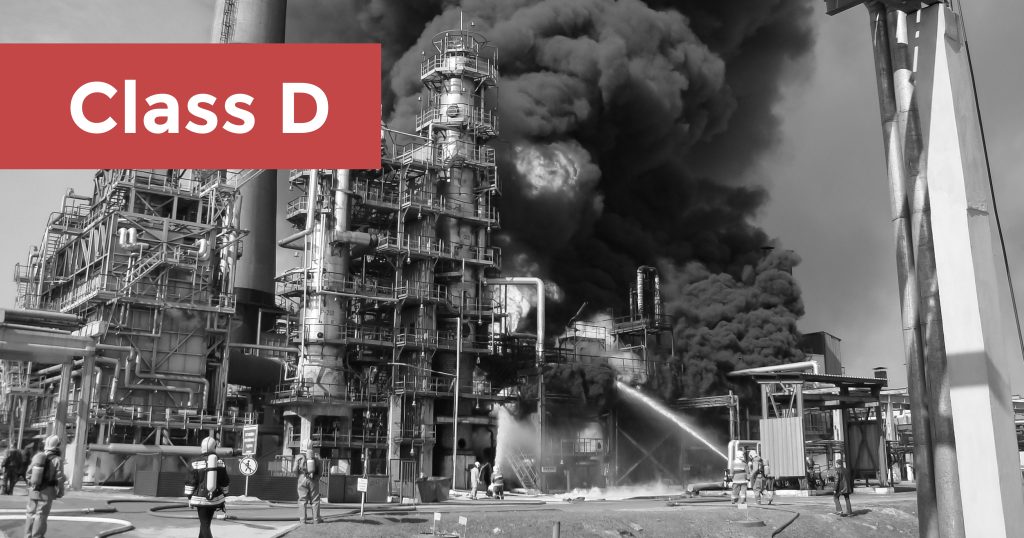
Class D fires are fuelled by ignited metals, such as magnesium, aluminium and lithium. They are relatively uncommon as they take intense heat to spark, meaning these fires can be extreme when they do occur. Any likely locations (such as labs or industrial warehouses) should always have a specialist L2 dry powder extinguisher on hand – this is the only type of extinguisher that can successfully suppress this kind of fire.
Class F
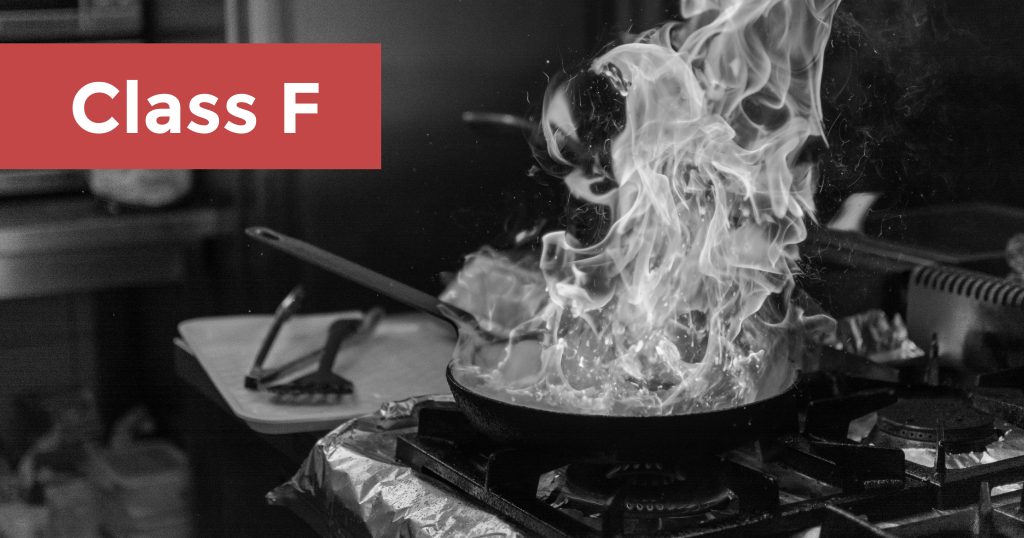
Class F fires involve cooking oil and are sometimes referred to as chip-pan fires. Class F fires occur in kitchens and restaurants – anywhere with grease and oil in abundance. Wet chemical extinguishers have been created for the sole purpose of combating these types of fires, made with a specific formula which will layer the oil, thus starving the flame of oxygen and quenching it.
Electrical Fires
Electrical fires are not given their own class as the electricity is not providing any fuel to the fire, it is merely the source of ignition. Therefore, electrical fires can fall into any of the classifications depending on what fuel has ignited. However, they are still worth mentioning as only specific extinguishers can be used on electrical fires. A water-based extinguisher should never be used if the source of the fire is electrical as, not only can they cause the fire to spread faster, the current can transfer back upstream and electrocute the operator. These fires can instead be handled with a CO2 or dry powder extinguisher.
Here at Fire Safety Equipment, we provide a huge variety of fire extinguishers to suit all commercial and domestic needs. As a well-respected online retailer, we dispatch fire safety equipment swiftly and affordably to numerous premises nationwide. Our expert team will be able to advise you on the right extinguisher for your needs to get you fire safe in no time.
If you’d like some advice or to enquire about our wide range of products, contact us today.

